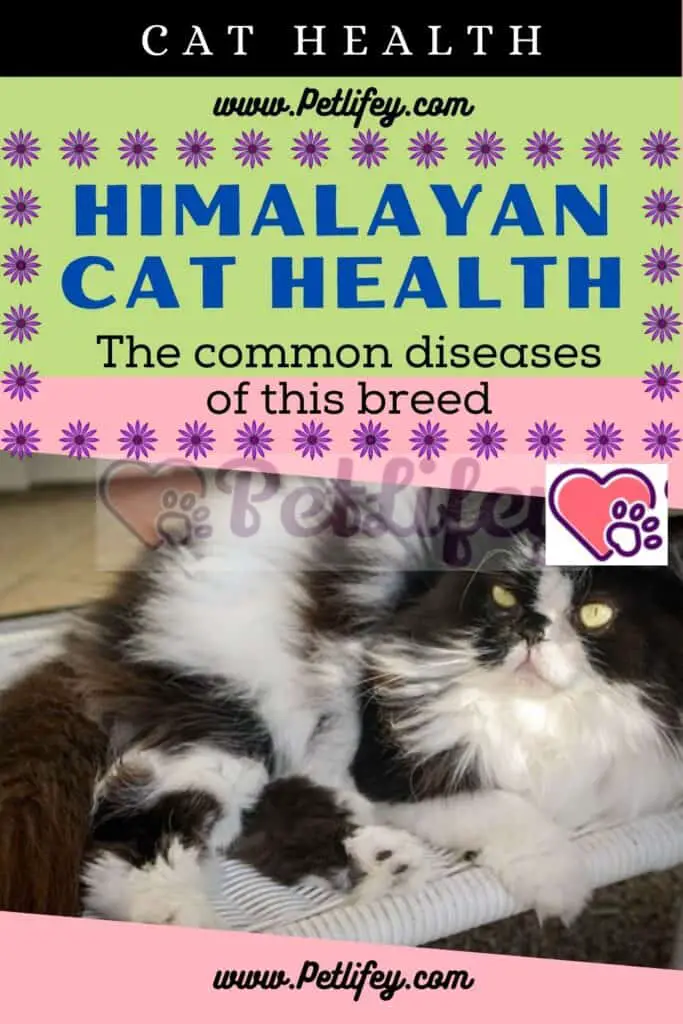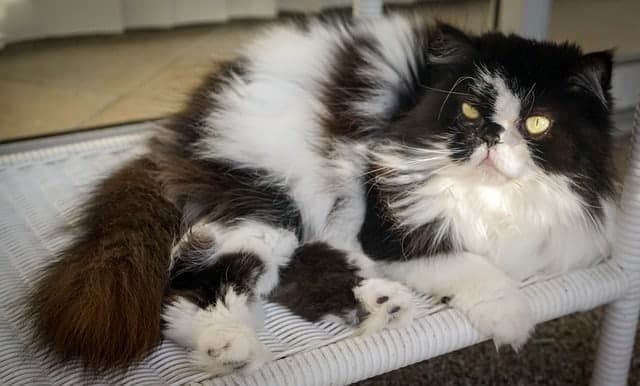Knowing the info on the health of our cat is essential to guarantee him a long life: here are the common diseases of the Himalayan cat.

The Himalayan cat is a charming and magnetic looking feline. Precisely because of some of their physical characteristics, however, the cats of this breed are more predisposed to the onset of hereditary diseases. What are the common diseases of the Himalayan cat? Let’s find out symptoms, causes and treatments together.
Common diseases of the Himalayan cat

The Himalayan Persian is a cat that tends to be long-lived and in good health.
The average duration of the specimens of this breed is between 10 and 15 years. Due to their kinship with the Persian, from which they inherited the particular conformation of the muzzle, these cats present similar pathologies and disorders.
Common diseases of the Himalayan cat include:
- Polycystic kidney disease
- Hypertrophic cardiomyopathy
- Progressive retinal atrophy
- Cryptorchidism
Polycystic kidney disease
Polycystic kidney disease opens up the list of common diseases in the Himalayan cat.
It is a hereditary disease that involves the appearance of small cysts on one or both kidneys.
Initially, the growths do not cause particular disorders and the disease is asymptomatic. Over time, however, the cysts increase in volume and cause progressive loss of kidney function .
Among the main manifestations of this pathology are:
- Nausea
- Slimming
- Halitosis
- Dehydration
- Increased thirst and frequency of urination.
Unfortunately, there is currently no cure for polycystic kidney disease. For this, prevention is essential.
Not only is it advisable to subject your four-legged friend to a genetic test to identify the disease and to regular ultrasound scans to monitor the state of the kidneys, but also to prevent the affected individuals from reproducing.
Hypertrophic cardiomyopathy
Hypetrofic cardiomyopathy is one of the common diseases of the Himalayan cat.
It is a heart disease that specifically affects the left ventricle, causing it to thicken and, consequently, to reduce the ventricular lumen.
This alters normal blood flow, causing symptoms such as:
- Heart murmur
- Dyspnea
- Fatigue
- Increased heart rate
There is no definitive cure for this pathology. The only modality of intervention consists in regularly monitoring the health of the cat, through echocardiographic checks and electrocardiograms.
For the breeds at risk, a genetic test is available for the cat to undergo, in order to promptly identify the pathology.
Progressive retinal atrophy
Progressive retinal atrophy is one of the common diseases of the Himalayan cat.
This pathology causes a degeneration of the cells of the retina, up to definitively lead to blindness in the cat.
Usually, the symptoms with which this disease occurs appear clearly and unequivocally around the fifth year of the cat’s life. These include:
- Abnormalities of the retina
- Night blindness
- Loss of central or peripheral vision
- Excessive sensitivity to light.
The specimens of this breed, due to the brachycephalic snout, are predisposed to further ocular disorders due to excessive secretion, which expose them to the risk of infections.
For this, it is essential to periodically clean the eyes of the Persian Himalayan. To know how to do it and find out everything related to the care of the Himalayan cat , consult this article.
Cryptorchidism
Finally, cryptorchidism closes the list of common diseases in the Himalayan cat.
This term indicates a pathology of the cat’s genital system: one or both of the animal’s testicles do not descend into the scrotum, but remain inside the stomach.
If no action is taken, this condition risks causing the appearance of pathologies such as:
- Testicular cancer
- Testicular torsion.
The only way to solve the problem is to castrate the cat. This surgery is slightly more complex than a normal sterilization operating procedure.
However, it is a routine procedure, with very high success rates.






